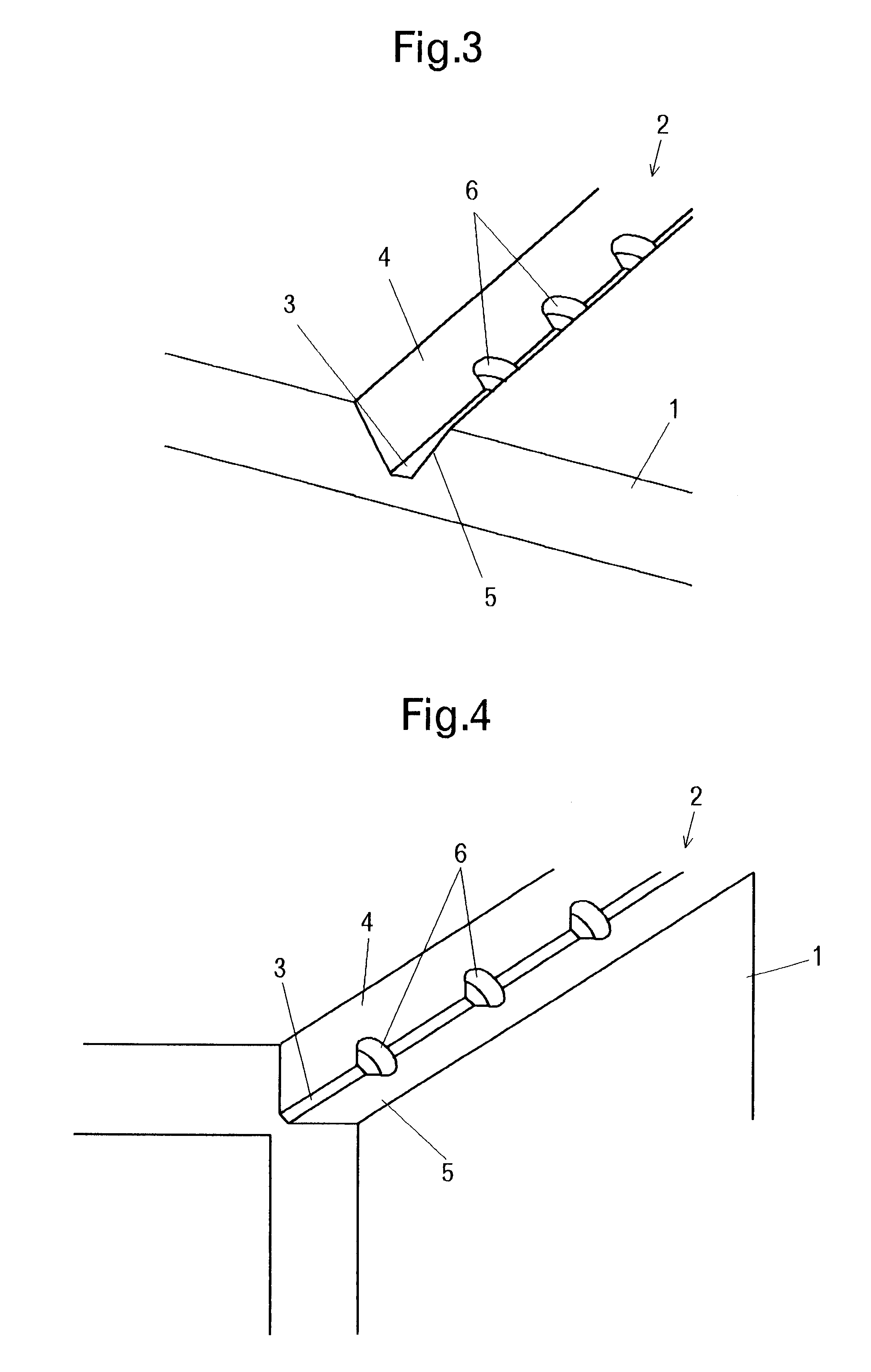Plastic sheet having creasing lines
a technology of creasing lines and plastic sheets, applied in the field of plastic sheets, can solve the problems of cracking of creasing line portions, affecting the performance of completed plastic containers or casings, and difficult fabrication of containers with corners of a desired angle,
- Summary
- Abstract
- Description
- Claims
- Application Information
AI Technical Summary
Benefits of technology
Problems solved by technology
Method used
Image
Examples
Embodiment Construction
An example of the plastic sheet having creasing lines will now be described. In the example, a plastic sheet 1 was formed of a sheet of amorphous polyethylene terephthalate (A. PET) having a thickness of 0.3 mm. Bottom surface ribs 6 of each creasing line 2 were designed to have a semi-circular cross section.
In this example, each creasing line 2 was designed such that the lower-end width L.sub.1 of the creasing line was 0.1 mm (about 33% the sheet thickness Q), the upper-end width L.sub.2 of the creasing line was 0.5 mm (about 166% the sheet thickness Q), the depth H of the creasing line was 0.22 mm (about 73% the sheet thickness Q), the height of the bottom surface ribs 6 was 0.05 mm (about 16% the sheet thickness Q), and the residual thickness Q.sub.1 was 0.08 mm (about 26% the sheet thickness Q). Further, the pitch P of the bottom surface ribs 6 was set to 3 mm. Creasing lines having the above-described dimensions were formed on the plastic sheet 1 by use of a creasing line-formi...
PUM
| Property | Measurement | Unit |
|---|---|---|
| Fraction | aaaaa | aaaaa |
| Fraction | aaaaa | aaaaa |
| Fraction | aaaaa | aaaaa |
Abstract
Description
Claims
Application Information
 Login to View More
Login to View More - R&D
- Intellectual Property
- Life Sciences
- Materials
- Tech Scout
- Unparalleled Data Quality
- Higher Quality Content
- 60% Fewer Hallucinations
Browse by: Latest US Patents, China's latest patents, Technical Efficacy Thesaurus, Application Domain, Technology Topic, Popular Technical Reports.
© 2025 PatSnap. All rights reserved.Legal|Privacy policy|Modern Slavery Act Transparency Statement|Sitemap|About US| Contact US: help@patsnap.com



